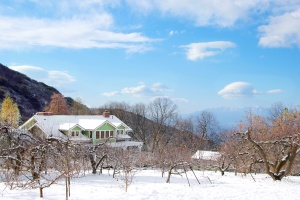

 A local photography club in which I participate assigned a project. We were to create a still life image. I love stories, so I started gathering the props to tell a story of a traveling musician who missed his family while on the road. The props had a modern feel. For example, I was going to use a ukulele and a photo of my wife and kids from several years ago.
A local photography club in which I participate assigned a project. We were to create a still life image. I love stories, so I started gathering the props to tell a story of a traveling musician who missed his family while on the road. The props had a modern feel. For example, I was going to use a ukulele and a photo of my wife and kids from several years ago.
I decided to ask my kids to help gather some props and they eagerly jumped to the task. My son came out of his room with a battered violin he found at his grandparents’ house. The thing looked incredible! My daughter emerged from her room with a pocket watch and what looked like an engagement ring. And we found some old black and white photos of my kids’ grandma when she was young.
Suddenly the story took on a new twist with the introduction of these awesome props. We started building a scene about a man who chose fame and wealth through his music over the young woman he loved. He had bought her an engagement ring, but never proposed because the dream of fame and wealth was far more enticing. Now years later, he carries the ring and photos of her on his musical travels.
The story is laced with regret, melancholy and a desperate hope that he can return to her. But we know the odds of their reunion of love are slim.
I love the story we created. Storytelling with one image is what makes photography so rich. But even more, I love the story behind the story. In this case, the collaboration with my kids was a fun and memorable time. And the images are as much theirs as they are mine.
It makes me think that there might be a Story behind that story…
 As I mentioned in my last post, I had a photoblog in 2009-2010 that was an offshoot of this blog.
As I mentioned in my last post, I had a photoblog in 2009-2010 that was an offshoot of this blog. Ten years ago, I tried my hand at a photoblog. I took up photography as a hobby because it helped me to stop and see the world in a way that my busy life normally prevented. The photoblog was a small place on the internet to post the images I created along with short reflections.
Ten years ago, I tried my hand at a photoblog. I took up photography as a hobby because it helped me to stop and see the world in a way that my busy life normally prevented. The photoblog was a small place on the internet to post the images I created along with short reflections. Back in February 2017, I decided to become more intentional with my photography. So virtually every weekend, I would buy a cup of coffee and go to Finkbiner Park in Glendora, CA. I would walk around sipping my coffee and taking photos of compositions that caught my eye.
Back in February 2017, I decided to become more intentional with my photography. So virtually every weekend, I would buy a cup of coffee and go to Finkbiner Park in Glendora, CA. I would walk around sipping my coffee and taking photos of compositions that caught my eye.
 I look forward to my weekends. And for me, this photo summarizes one of the reasons why. On Saturdays and Sundays mornings, I try to make time to walk and take photos. Like everyone, all week I’m rushing and working. But for an hour or so on the weekends, I slow down, look around, and try to see things I normally wouldn’t notice.
I look forward to my weekends. And for me, this photo summarizes one of the reasons why. On Saturdays and Sundays mornings, I try to make time to walk and take photos. Like everyone, all week I’m rushing and working. But for an hour or so on the weekends, I slow down, look around, and try to see things I normally wouldn’t notice. “Roundabouts” by Zeb Andrews
“Roundabouts” by Zeb Andrews I read somewhere that there are two groups of photographers.
I read somewhere that there are two groups of photographers.






